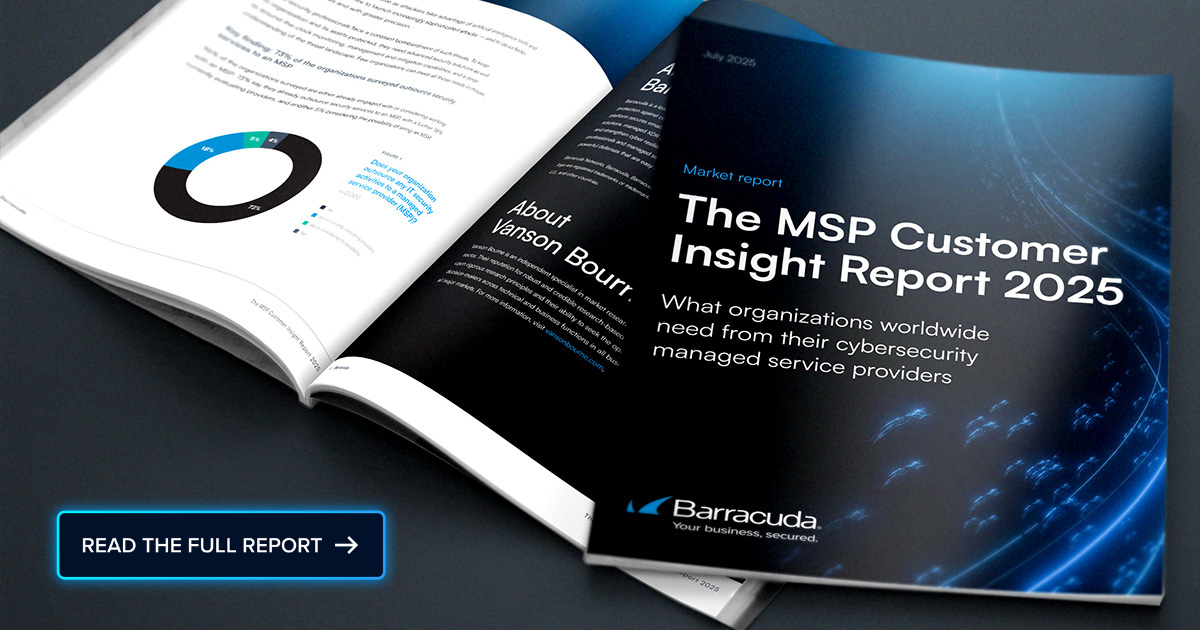 If you’re like many managed service providers (MSPs), you’ve likely run into data transparency issues — even if you didn’t realize it then. As it turns out, this concept is fundamental to privacy and data security. What should you do about it?
If you’re like many managed service providers (MSPs), you’ve likely run into data transparency issues — even if you didn’t realize it then. As it turns out, this concept is fundamental to privacy and data security. What should you do about it?
What do transparent data practices look like?
Practicing transparency involves providing your clients with details on how you collect, use, and share their data, which could include anything from financial reports to login credentials. You must openly and disclose these specifics with them — or your company’s stakeholders, depending on the information you handle — to demonstrate openness.
Several fundamental aspects of data transparency exist, the most significant being communication. You should clarify relevant privacy policies, security measure updates and procedure changes to keep your customers informed. You should also provide relevant parties access to your reports or datasets if circumstances allow.
Even if you don’t realize it, your clients may have issues with your current level of transparency. According to one survey, only 34 percent of respondents believed companies were clear about how they used data in 2022, representing a double-digit drop from 2021. With the cost of breach recovery on the rise, many people silently expect more out of MSPs every year.
If you operate like other businesses, there’s a chance you may need to improve your data practice transparency. According to one survey, 77 percent of chief financial officers in tech say their companies collect customer data on an as-needed basis — meaning 23 percent readily admitted they gather more than necessary. Which side do you fall on?
Why should I care about data transparency?
Caring about data transparency isn’t a surface-level act — it has broad, long-lasting effects. When you’re open and straightforward with your client, you demonstrate trustworthiness. You consequently build credibility, minimize miscommunications, and can easily maintain your professional relationship.
The alternative is less desirable. For reference, about half of business-to-business (B2B) purchasers reportedly stop doing business with a company when it violates their digital trust. Neglecting transparent data collection, utilization, and sharing practices could cost you clients and prospects.
Accountability is another benefit of data transparency. If a threat actor manages to view, manipulate, or exfiltrate a dataset, your traceable system and recordkeeping practices make pinpointing the root cause and identifying the culprit much easier. This way, you can accelerate incident recovery — and won’t have to make up excuses when your client asks what happened.
Now that companies are beginning to expect you to manage information technology (IT) and data protection responsibilities, being able to quickly respond to security incidents will be a huge help. Considering 87 percent of MSPs experienced at least one data breach in 2024, with 16 percent reporting 11 or more, traceability and transparency are more important now than ever.
Optimization is another benefit of prioritizing transparency. You can eliminate redundancies and improve B2B coordination, streamlining your data practices. If you’re like the 52 percent of companies that report they spend too much time manually collecting data, you would likely benefit from expediting those operations.
What transparent data practices would you recommend?
Let’s start with the basics — clearly communicating what data you collect, how you use it, and who you share it with is essential. Don’t assume your clients know what you’re doing with the information because those assumptions can turn into miscommunications, strained professional relationships, and conflict. Mastering these fundamentals is vital to success early on.
Unless your agreement stipulates communication through a specific channel, use multiple to keep customers updated. For example, if your privacy policy changes, you should send them an email, update your frequently asked questions page, and initiate a video call — don’t choose just one option. This way, you ensure you get your message across promptly.
Try developing visuals and using easy-to-understand language so your reports remain accessible to non-technical users. After all, your client is outsourcing aspects of their business to you for a reason — they may be unable to understand industry jargon that you consider basic. Even if they can, they may want to share your findings internally with non-experts.
Implementing robust security measures is one commonly overlooked transparent data practice to consider. When you manage datasets, you must defend against breaches, leaks, and exfiltration. Demonstrating how you safeguard against these threats — addressing any gaps or pain points beforehand — is an easy way to maintain transparency.
Consider developing some feedback mechanism to give your clients a chance to voice their opinions on your transparent data practices. The fact that few MSPs measure customer satisfaction doesn’t mean it’s unimportant. They can help you identify gaps and operational inefficiencies, enabling continuous improvement.
Should I comply with frameworks like the GDPR?
Data privacy and security frameworks like the General Data Protection Regulation (GDPR) require you to protect sensitive details, including financial, health, and personally identifiable information. While many are widespread, they aren’t all-encompassing. For instance, the GDPR only applies to you if you operate in or serve those in the European Union.
Even though you may not be held to laws or rules like the GDPR, the California Consumer Privacy Act, or the Health Insurance Portability and Accountability Act, complying with them is wise since it may protect you from legal issues. Notably, you could make compliance a selling point to convince customers of your trustworthiness and dedication.
If you don’t know which frameworks to adopt, look to the National Institute of Standards and Technology or the International Organization for Standardization. Both provide valuable guidance for data protection that you can use to reassure your clients. More importantly, they let you differentiate your company from your competitors.
Where should I go from here?
Whether you’ve been compiling reports, reviewing logs, or analyzing datasets, the concept of transparency has likely crossed your mind long before you considered addressing it. Now that you’re aware of it, consider it an ongoing necessity. While establishing a chain of custody and maintaining open communication can be time-consuming, the effort is often worth it.
Photo: Maren Winter / Shutterstock

